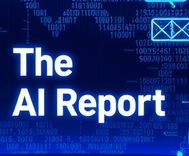How Artificial Intelligence Is Revolutionizing Emergency Medicine

The AI Report
Daily AI, ML, LLM and agents news
The Pulse of Progress: How AI is Reshaping Emergency Medicine
Imagine an emergency department where every decision, from patient arrival to discharge, is made with unprecedented speed and precision. Where overcrowded waiting rooms become a relic of the past, and clinicians are empowered by real-time insights rather than burdened by administrative tasks. This isn't a distant fantasy; it's the future Artificial Intelligence (AI) is already sculpting in emergency medicine.
Emergency care operates under immense pressure, demanding rapid, accurate judgments with limited resources. AI, a convergence of computer science and data-driven algorithms, is emerging as a powerful ally, fundamentally transforming how we approach urgent medical situations.
AI's Transformative Role in the ED Ecosystem
Smarter Triage, Faster Care
AI-driven algorithms can sift through vast datasets far more efficiently than traditional methods, enabling clinicians to prioritize patients with superior accuracy. These models predict outcomes like hospital admission or ICU transfer for conditions such as stroke, sepsis, and myocardial infarction, ensuring critical cases receive immediate attention.
Precision Diagnosis at Speed
Medical imaging is a prime frontier for AI. Deep learning algorithms are trained to analyze X-rays, CT scans, and ultrasounds, detecting abnormalities like intracranial hemorrhage or fractures with high accuracy. This reduces conventional diagnostic delays and, with Explainable AI (XAI), provides clinicians with transparent, interpretable diagnostic outputs, fostering trust and confidence.
Optimized Resource Management
AI's predictive analytics are a game-changer for mitigating ED crowding. By accurately forecasting patient arrivals and anticipating surges, hospitals can shift from reactive to proactive staffing models. This optimizes the allocation of vital resources, such as beds, reducing system inefficiencies and shortening patient wait times, which ultimately benefits everyone in the system.
Beyond Hospital Walls: Prehospital and Personalized Care
AI isn't confined to the emergency department. Symptom checkers and chatbots guide patients in self-assessment, while natural language processing helps emergency dispatchers rapidly identify critical conditions like out-of-hospital cardiac arrest. In Emergency Medical Services (EMS), AI aids ambulance routing, prehospital risk stratification, and remote monitoring, improving outcomes before hospital arrival. Furthermore, the emerging concept of 'digital twins' – virtual patient models – promises to personalize interventions and further optimize resource use by simulating disease progression and treatment responses.
Tangible Benefits for Patients and Providers
The integration of AI translates into significant advantages:
- **Enhanced Patient Outcomes:** Faster, more precise assessments lead to earlier interventions and improved prognoses.
- **Alleviating Operational Strain:** Better prediction of patient flow and optimized resource allocation mean less overcrowding, reduced wait times, and a more resilient healthcare infrastructure.
- **Empowering Clinicians:** Automating routine tasks, from administrative duties to clinical summaries using generative AI, reduces clinician burnout and frees up valuable time for direct patient care, fostering greater job satisfaction.
Navigating the Roadblocks: A Path to Responsible AI
Despite its promise, AI’s full potential hinges on addressing critical challenges.
Addressing Bias and Data Integrity
AI models are only as fair as the data they learn from. Historical health data can carry latent biases, potentially amplifying societal inequities. It is imperative to ensure diverse, representative datasets are used for training to prevent disadvantaging already marginalized patient populations, such as women and racial minorities.
Seamless Integration and Transparency
Integrating novel AI systems into existing, often fragmented, hospital IT infrastructures presents a significant hurdle. Lack of data interoperability complicates deployment and increases costs. Moreover, the “black box” problem, where complex deep learning models lack transparent decision-making processes, requires explainable AI methods to build clinician trust and ensure accountability in medico-legal contexts.
Ethical and Regulatory Foundations
Patient privacy and data security are paramount. Robust ethical and legal frameworks must be established to govern how sensitive patient information is handled. Regulatory bodies, like the U.S. FDA, are increasingly involved, classifying AI tools as software as a medical device (SaMD) and requiring rigorous evidence of safety and effectiveness throughout their lifecycle. We must also acknowledge the human factor, guarding against automation complacency and selective adherence, where clinicians might over-rely on or dismiss AI advice based on pre-existing beliefs.
The Future of Emergency Medicine: Augmented Intelligence
AI is not here to replace human expertise, but to augment and empower it. Its role is to serve as a sophisticated tool, enhancing the capabilities of our dedicated healthcare professionals. To truly unlock AI's transformative power, policymakers, regulators, and healthcare leaders must collaborate. Together, we can build robust ethical and legal frameworks that champion data privacy, algorithmic transparency, and legal accountability. By guiding the gradual, thoughtful deployment of AI, we can ensure a safer, fairer, and more efficient emergency care system for everyone. The journey ahead requires foresight and collaboration, but the destination—a revolutionized emergency medicine—is within reach.

The AI Report
Author bio: Daily AI, ML, LLM and agents news
